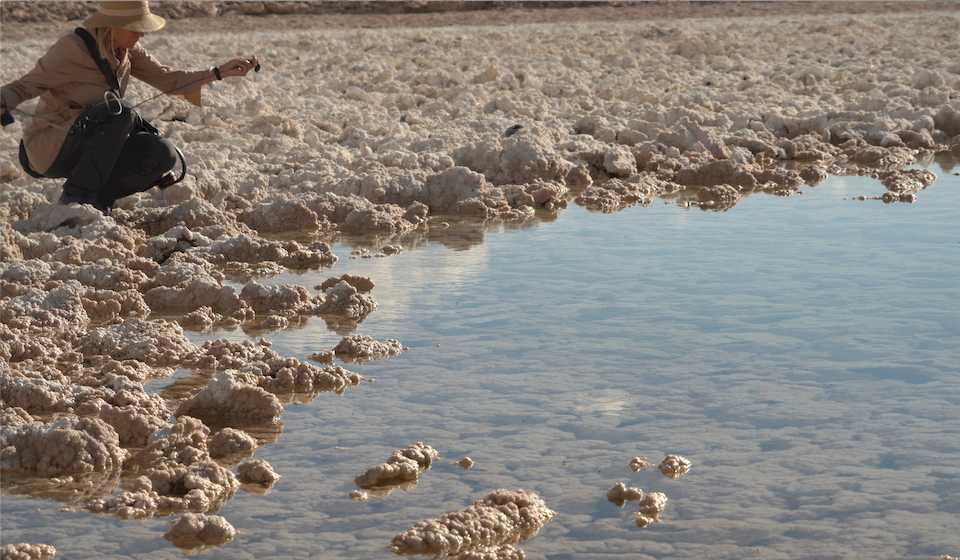
Scientific Collaborator: Graziano Ceddia & Luca de Felice
This project considers the entangled rights for water, between nature and humans, through the entry point of contested water in the Atacama desert. Once an ancient seabed and now a site of saline water mining for lithium extraction, this remote desert site with its unique salt water dependent ecosystem is intimately entangled with the push for a lithium-focused energy transition away from fossil fuels and necessary response to anthropogenic climate change.
The artwork generates digital twins of two remote natural saline lagoons in the Atacama desert, using drones, photogrammetry and gaming engine visualisation. These are linked in real-time with an automated web search for terms associated with green energy policies and lithium-led energy transitions. The landscapes decay over time as digital water levels deplete incrementally with each web hit.
In collapsing the distance between these remote, unique desert saline waterbodies, and the centres of global north’s political and economic power, the work visualises- through a contemporary digital take on the Euro-historic visual art modality of ‘landscape’- a water-led speculative storytelling of cause to effect; of a passage from complexity to complexity.
CREDITS
Penelope Cain | Graziano Ceddia & Luca de Felice in collaboration with: Alan Belward.
Programming and worldbuilding: Nathan Marcus .
The amount of lithium contained in technology used for this project has been estimated. The amount of brine ground water required to water-mine this amount of lithium has been calculated at between 80 and 400,000 L. The wide range reflects the paucity of open data on brine water extraction in the Atacama. See: How much water is used to make the world’s batteries?
Image by: Penelope Cain, 2023